Cagliari, the capital of Sardinia as well as its largest and most populous city, a perfect fusion of millennial history, unforgettable sights, and vibrant culture. A city that surprises with its cultural richness, delicious cuisine, and unique hospitality. It stretches along the coast of the Gulf of Angels, between the Sella del Diavolo and the Molentargius pond to the east, and the Cagliari pond to the west. A curiosity: just like Rome, it is built on seven hills (Castello, Tuvumannu, Monte Claro, Monte Urpinu, Colle di Bonaria, Colle di San Michele, Calamosca). The first major center, after prehistoric settlements, developed under the Phoenicians in the 8th century B.C., but the city has a rich and complex history encompassing cultural influences from different civilizations, including precisely the Phoenicians, Romans (in Roman times the city was called Karalis), Vandals, Byzantines, Pisans, Aragonese, and Spanish. For a time Cagliari was also the capital of an autonomous state, the Giudicato of Cagliari, which lasted about three hundred years (from the 10th century until 1258, when the territory was divided between the Giudicato of Gallura, the Giudicato of Arborea, and the fiefdoms of the Pisan Gherardesca family). These diverse legacies are clearly reflected in Cagliari’s architecture, traditions and cuisine. It is a city that fascinates and enchants visitors with its timeless history, natural beauty, and millennial culture. Through its picturesque streets and lively squares, Cagliari offers a journey through time, uniting past and present in a warm embrace. Whether one is a history buff, a food lover, or in search of views or nature, Cagliari awaits anyone with open arms. Where to start your visit? Here are ten places not to be missed!
Cagliari’s main house of worship, the Cathedral of Santa Maria is one of the city’s most precious architectural jewels. Located in the heart of the Castello district, Cagliari’s historic center, this cathedral captivates visitors with its majesty and unique fusion of styles: Gothic on the façade, Baroque inside. The history of Cagliari Cathedral dates back to the 13th century; the Pisans began its construction perhaps as early as 1217 (however, the first record dates from 1254). The new church was built on the site of an earlier church dedicated to Saint Cecilia. Over the centuries, the cathedral underwent several alterations and extensions, which contributed to the rich variety of architectural styles that characterize the building. The salient facade is Romanesque-Gothic in style and closely resembles that of Pisa Cathedral, while the interior opens into a rich Baroque spectacle of elaborate altars, stucco work, and paintings. Among the works preserved here are the splendid marble pulpit by Maestro Guglilemo, executed in the 12th century for Pisa Cathedral and moved to Cagliari in the 14th century, the scenic altar of St. Isidore, the 16th-century polyptych of the Crucifixion attributed to Michele or Pietro Cavaro, the mausoleum of Martin I of Sicily, and the triptych of Clement VII. The Cathedral also holds the relic of the Holy Thorn, believed to be a thorn from Christ’s crown.
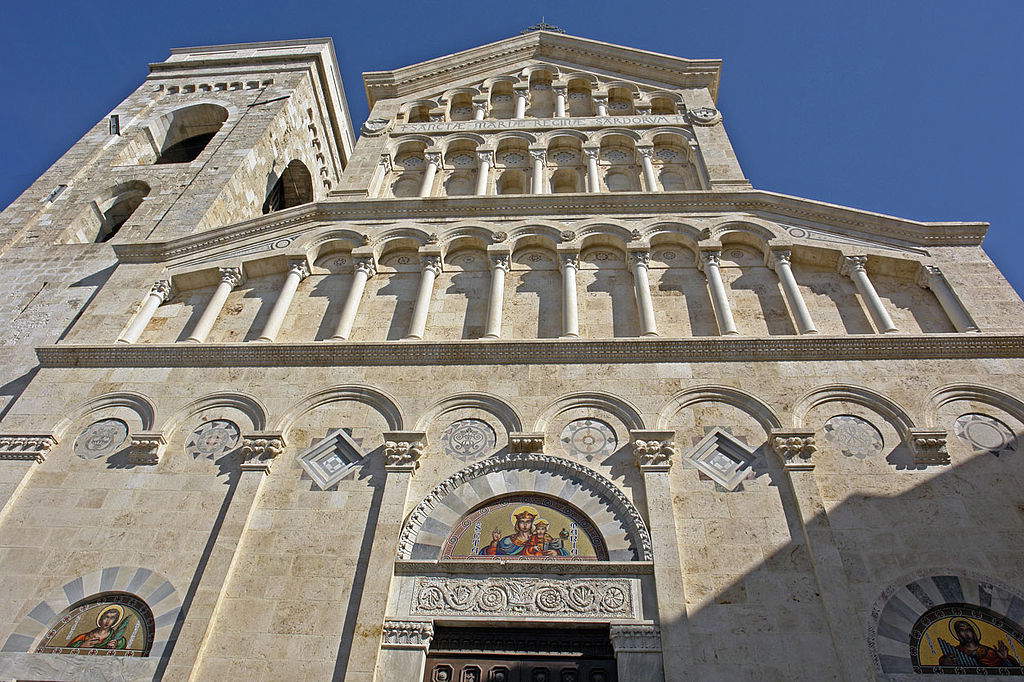
Cagliari’s Citadel of Museums is an exceptional museum complex that holds works of art, historical artifacts and archaeological finds spanning millennia of the city’s history. Located in the Castello district, it is a hub that offers a true concentration of museums in one complex. Five museums are part of it: two are state-owned, namely the National Archaeological Museum (which offers an in-depth view of Sardinia’s ancient history, with prehistoric artifacts, including objects from the Nuragic culture, jewelry, ceramics and Roman artifacts, and some of the giants of Monte Prama), and the National Picture Gallery of Cagliari (houses a vast collection of paintings, sculptures and works of art ranging from the Middle Ages to the 20th century with works by Sardinian artists, such as the Master of Castelsardo or as Michele and Pietro Cavaro, Spanish masters and also Italian and international artists); two civic, namely the Museo Etnografico and the Museo Siamese Stefano Cardu (the latter offers an eclectic collection of Asian artifacts collected by Cagliari collector Stefano Sardu); and a university one, the Museo delle Cere Anatomiche Clemente Susini, which features a collection of anatomical wax models of the highest caliber.

Located in the heart of Cagliari’s old town, in the Castello district, the Bastion of Saint Remy is one of the most iconic and fascinating places in the capital of Sardinia. This historic bastion offers panoramic views of the city, the sea and the surrounding hills. The Bastion of Saint Remy is named after Filippo Guglielmo Pallavicino, baron of Saint-Rémy, who was viceroy of Sardinia during the Savoy era. The majestic structure was built in the 19th century: its main function was to connect the highest and lowest areas of the city, facilitating the flow of people and goods, and it was later transformed into a covered promenade, with a terrace named after Umberto I. The bastion is structured on several levels, with excellent views opening onto Cagliari and the sea. In addition to being an iconic tourist attraction, Bastion Saint Remy is also a gathering place for locals and travelers. The terrace offers open spaces where you can relax, enjoy a quiet walk or simply admire the view.

Symbols of medieval Cagliari, the Elephant Tower and the Tower of San Pancrazio dominate Cagliari’s urban landscape with their bulk. These two historic symbols are living testaments to the city’s medieval heritage and its strategic importance over the centuries. The Tower of San Pancrazio is the city’s tallest tower: built in 1305 by the Pisans, who commissioned the project from the Sardinian architect Giovanni Capula (also the author, two years later, of the Tower of the Elephant), this tower was part of the city’s defensive system and was part of a series of coastal towers that served to protect the coast from possible enemy threats. Like its twin tower, built in 1307, it is made of pietra forte, a white limestone that was quarried from nearby quarries on Bonaria Hill. The Tower of the Elephant, named for the statue of an elephant carved on its facade, is similar in shape to the Tower of San Pancrazio, but lower (31 meters versus 36). The only one that can be visited of the two is the Elephant Tower, which offers unique and panoramic views of the city, allowing visitors to better understand Cagliari’s topography and history.
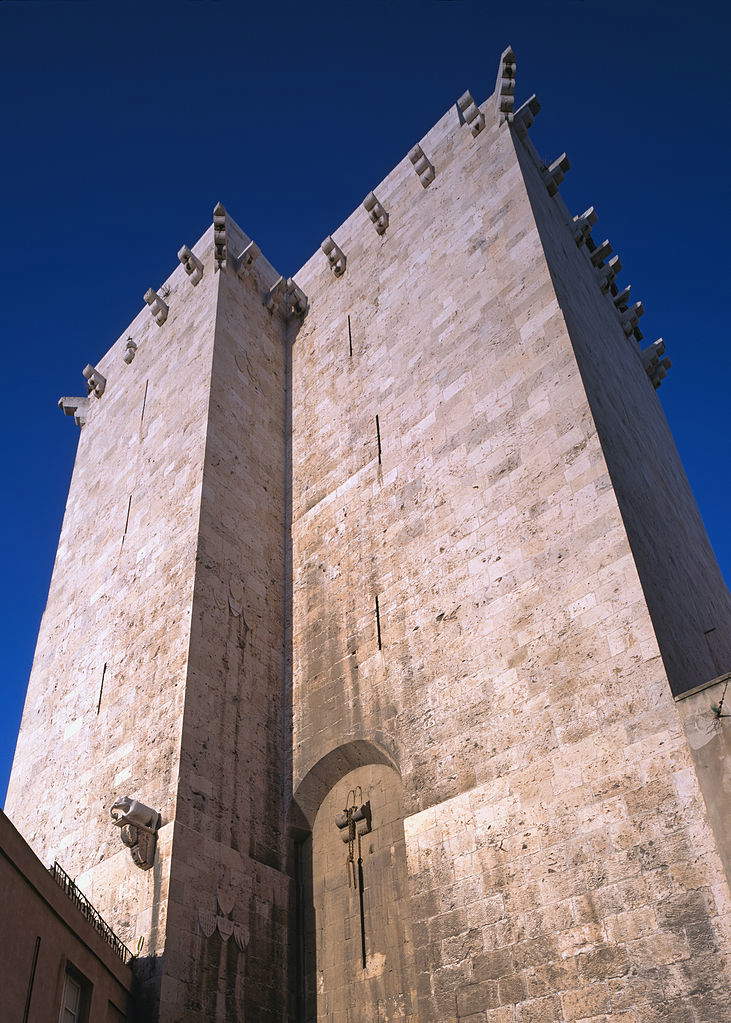
An imposing Art Nouveau building (one of the main ones in Sardinia), also known as Palazzo Bacaredda (named after the mayor of Cagliari at the time of its construction), it is the seat of the town hall. Built between 1899 and 1907, it was designed by Crescentino Caselli and Annibale Rigotti, and like Cagliari’s historic buildings is made of strong stone. The palace’s Art Nouveau style reinterprets the traditional Gothic-Catalan architecture of the historic center, and features a facade with a vast portico on Via Roma, two large octagonal turrets that give the structure momentum (they reach 38 meters in height), and various bronze statues and decorations. The Sala della Giunta houses several ancient works such as the retable of the Councilors by Pietro Cavaro.
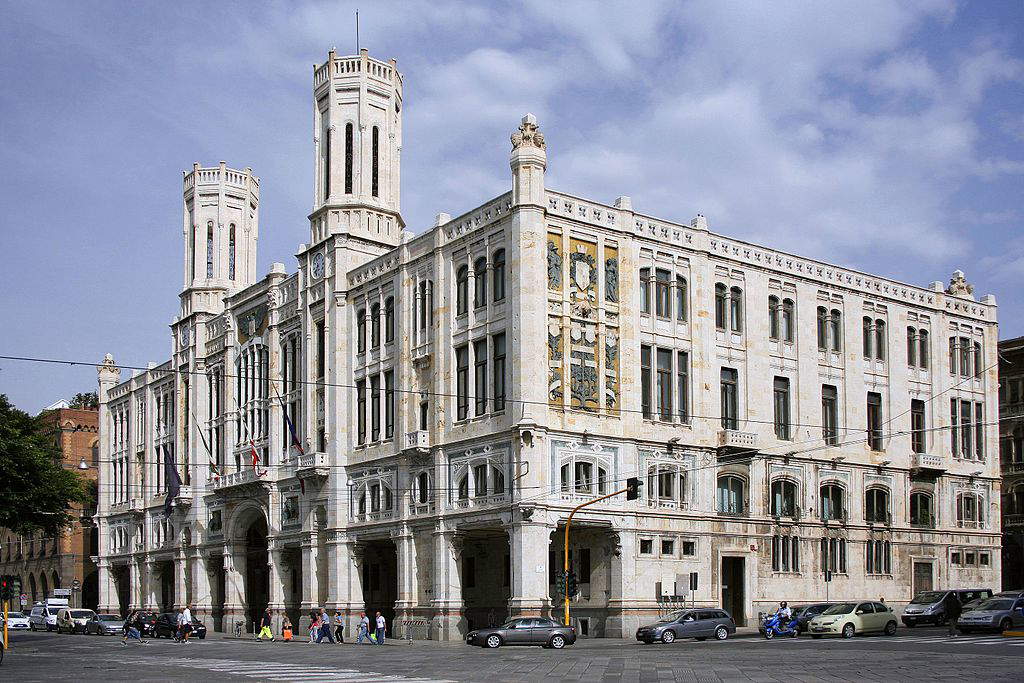
San Michele Castle is one of Cagliari’s main historical monuments, as well as one of the main monuments from the Giudicato di Cagliari era that still exist in the city, since its history dates back to at least the 12th century. This imposing fortress has a rich and complex history spanning centuries of domination and change, and is now a fascinating place to explore the city’s history and enjoy spectacular panoramic views. After the end of the Giudicato it was inhabited by the Spanish Carroz family, then it was also used as a lazaret, then again as a fortress, while today it is an exhibition center. It presents itself externally with a massive quadrangular plan, three towers and a moat. na visit to the Castle of San Michele is a journey into the history and architecture of Cagliari.

It is the oldest church in the city, one of the main early Christian buildings in the entire Mediterranean. In fact, the Basilica of San Saturnino, one of the oldest and most important religious sites in Cagliari, dedicated to St. Saturninus, the patron saint of Cagliari, dates back to at least the 5th-6th centuries AD and is considered one of the oldest Christian buildings in Sardinia. It is built on a site that, according to tradition, was the burial place of Saint Saturninus, a Christian martyr. The basilica was erected in his honor and became an important center of worship. Of the 5th-6th century building, the central body and part of the apse remain today (it was in fact remodeled in the Romanesque style in the 12th century). A visit to the basilica (the site is now managed by the Ministry of Culture) offers an opportunity to immerse oneself in Cagliari’s thousand-year history and to appreciate the beauty and layers of this ancient and significant place of worship.

This is an archaeological site of extraordinary importance located: in fact, it is the largest Phoenician necropolis in existence. The Tuvixeddu necropolis is located in the Sant’Avendrace district and covers an area of about three and a half hectares, on a site where traces of settlements dating back to the Neolithic period have been found. After being used in the Phoenician-Punic period (8th century B.C.) it was used as a burial site until the Roman era and beyond. The area was then used from the Middle Ages onward for residential purposes, and during World War II the necropolis was also used as an air raid shelter: only excavations begun in the 1960s began to bring Tuvixeddu’s historical heritage to the surface. Finally, in 2014, the necropolis was opened to the public and is now part of a park that can be visited daily.
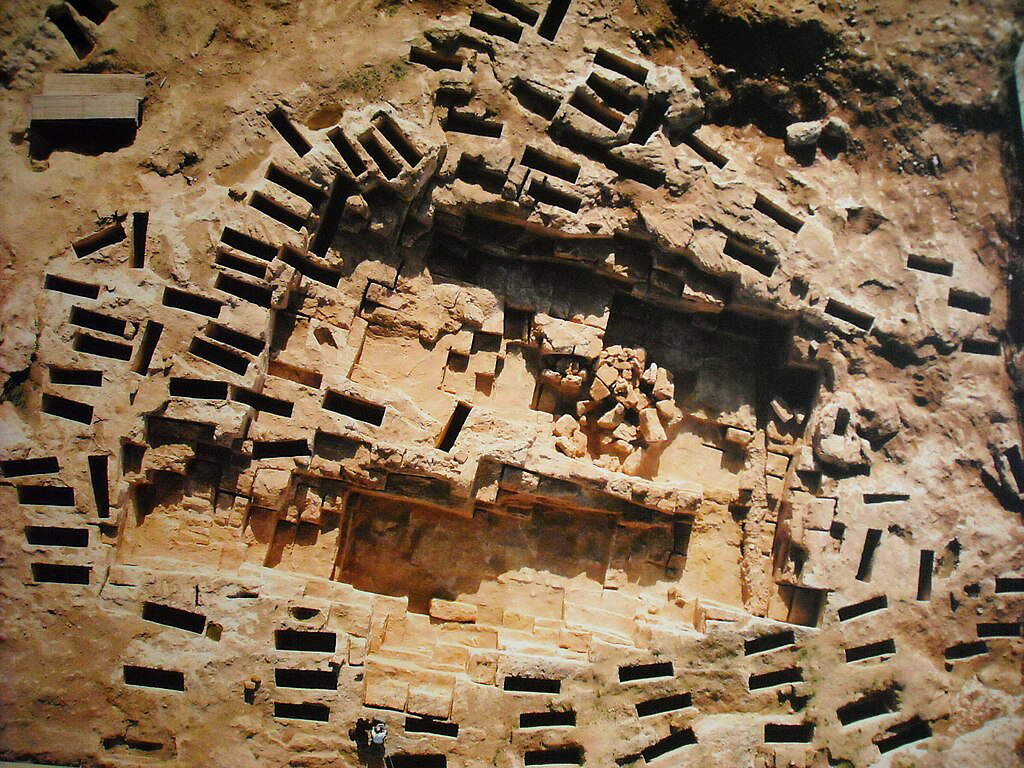
Poetto beach is one of Cagliari’s most popular and beloved destinations and one of Sardinia’s most famous beaches. With its crystal-clear waters and golden sand, Poetto offers an extraordinary bathing experience and a pleasant escape from everyday life. Poetto beach stretches for about 8 kilometers along Cagliari’s southern coast, from Sella del Diavolo to Margine Rosso. This long stretch of sand offers enough space to relax, sunbathe and indulge in sports activities. The beach’s location just minutes from Cagliari’s historic center makes it easily accessible and popular with local residents and visitors alike. The waters of Il Poetto beach are renowned for their clarity and turquoise color. In addition, with its wide expanse of sand and relatively shallow waters, the beach is ideal for swimming and cooling off on hot summer days. Swimmers can also participate in various water activities such as windsurfing, kitesurfing, and kayaking, which are popular due to favorable wind and sea conditions. Poetto is then equipped with a range of services for visitors, including bathing establishments, bars, restaurants, and water sports equipment rentals. These services make the beach suitable both for those who want to spend a relaxing day under the umbrella and for those seeking...more dynamic water adventures.

Established in 1999, the Molentargius-Saline Regional Natural Park represents one of the most important wetlands in Europe and is located a short distance from the center of Cagliari, divided between the Municipality of Cagliari and those of Quartu Sant’Elena, Quartucciu and Selargius. This park represents a unique environment consisting of wetlands, salt marshes and lagoons, which provide a vital habitat for many plant and animal species. The Molentargius-Saline Nature Park is particularly famous for being one of the most important waterfowl nesting and stopover areas in Europe. Among the bird species that can be spotted are pink flamingos, cormorants, herons, marsh harriers, and hedgehogs. Pink flamingos in particular are the iconic animals of the coast of Sardinia, and their presence always attracts many visitors and hikers. This species has been nesting in the Molentargius pond almano since the 1990s. Thus, the park plays a crucial role in the conservation of local biodiversity. Monitoring projects and active environmental management help preserve habitat and ensure a sustainable future for the park’s flora and fauna.
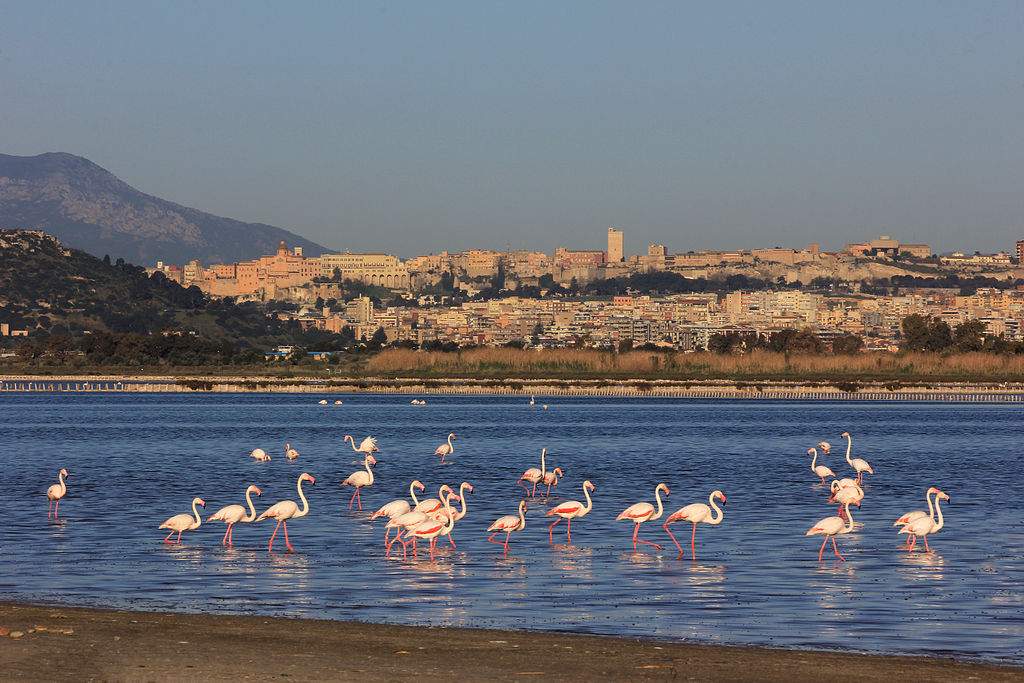
 |
| Cagliari, what to see: 10 must-see places in the city |
Warning: the translation into English of the original Italian article was created using automatic tools. We undertake to review all articles, but we do not guarantee the total absence of inaccuracies in the translation due to the program. You can find the original by clicking on the ITA button. If you find any mistake,please contact us.